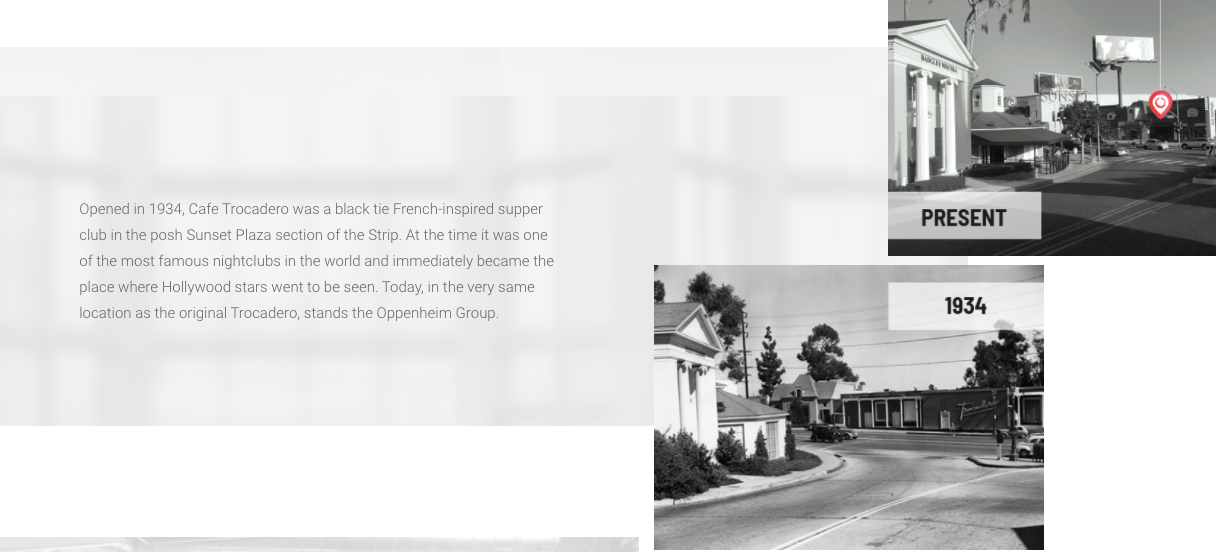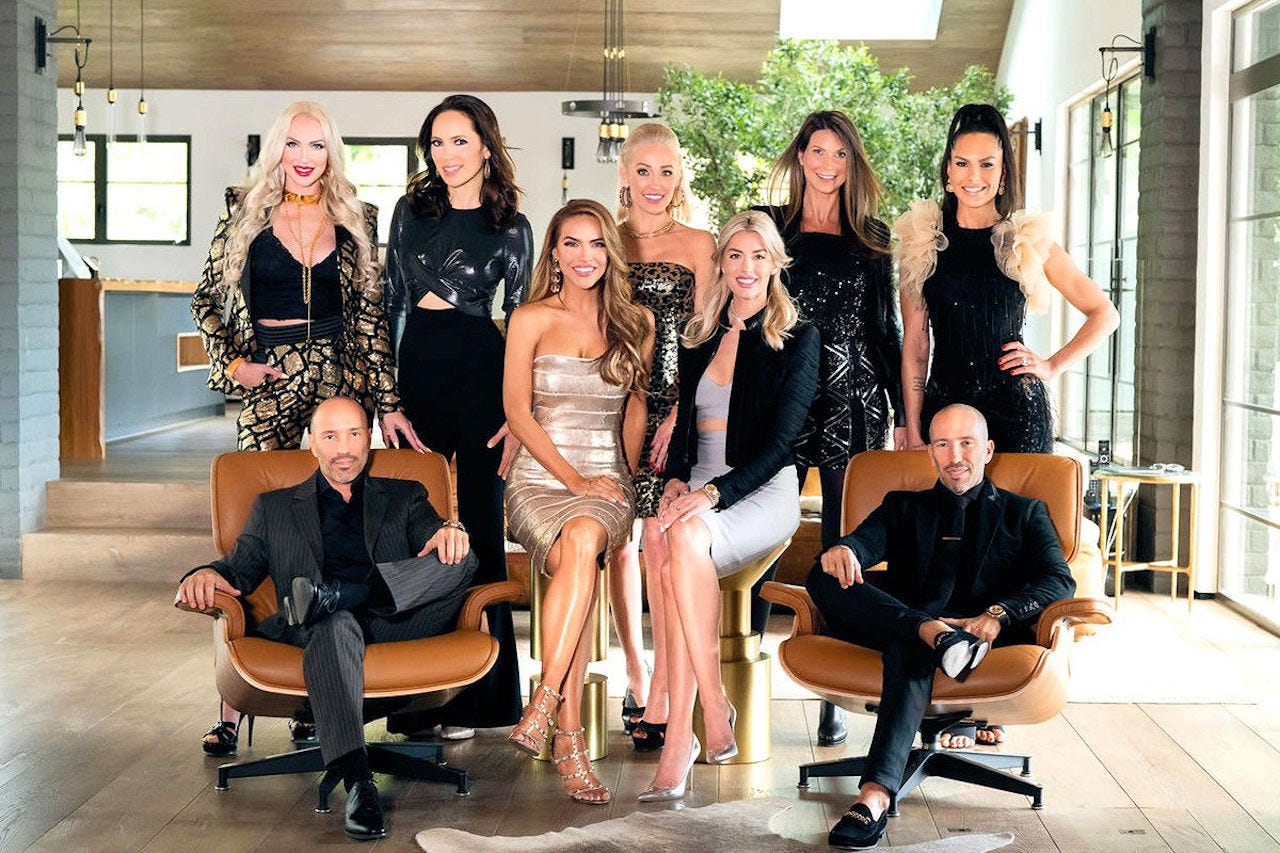Analysis
How an overheated luxury real estate market and never-ending fire season reveal the limits of our landscape.
Late in August, as pandemic malaise set in for good, sparks caught fire in California and everyone was watching Selling Sunset. The hit Netflix reality show follows the multimillion dollar deals and personal dramas of The Oppenheim Group, an elite West Hollywood real estate brokerage founded by two identical brothers, staffed with Amazonian female agents in many-colored sheaths who manage a portfolio of properties so luxe they should be illegal.
I started watching and burned through three seasons in a week. It was too easy to fall into loathing shit-stirring Davina, to feel protective of new girl Chrishell or be mesmerized by Christine’s couture ponytail. The show has an equal mix of one-star and five-star reviews saying things like, “Terrible. I love it!” and “Armagedon [sic] of Humanity” and “too toxic to continue watching.” Davina hatred is widespread on Twitter. The women of Selling Sunset snipe and bitch and own their shit and run all the reality show paces of predecessors like The Hills, Real Housewives, and Property Brothers. But no matter the onscreen drama, the women of the Oppenheim Group always do their job, and their job is to sell property.
The Oppenheim Group’s office is a short walk from my apartment, and a few of the featured properties are visible in the hills above my street. The properties are modernist and beautiful in their hubristic, impractical design. Sometimes I imagine the line of fire along the hillcrest, creeping over their property lines. Or I picture the mansions breaking free from their foundations and sliding down into the sea. Selling Sunset knows we hate the rich as much as we envy them. The show doesn’t exist to be loved or even liked. It’s simply the latest phase of a century-old public relations campaign for California real estate.
The first episode is called “If Looks Could Sell.” We hear the Oppenheim brothers’ elevator pitch: “It may be our name on the door, but behind that door is all of the kick-ass women that make this brokerage what it is.” Every woman in this office is gorgeous, from Israeli Gwyneth Paltrow doppelganger Maya to vicious ice queen Christine to wise-cracking former model Amanza, Bambi-eyed romantic Heather, girl-next-door Chrishell, fallen aristocrat Davina, and teacher’s pet Mary.
Maya and Chrishell address the Oppenheim Group’s unspoken hiring directive separately. Walking into the office on her first day with the agency, Chrishell says, “They’re all beautiful. That’s the first thing I noticed,” while Maya feigns shock that the new hire is pretty. The show seems to think this is a good thing — that these women represent the Glam Feminist Girlboss ideal, closing deals and kicking ass. But the Oppenheim brothers understand the advantage of glamorous agents in this business — a deal with Netflix, for one.
Maya says, “there is something very sexy and appealing about living in the Hollywood Hills. Like, you’re talking about the history of Hollywood.” History in real estate terms means which celebrities live or lived nearby, or which famous architect designed the house before a garish remodel. The Oppenheim Group’s offices trade on old Hollywood glamour, having been built on the site of the original Cafe Trocadero — with all new brick-and-chrome construction, of course. Too much history can ruin the appeal.

As I’m writing this, the air quality in West Hollywood is rated Unhealthy. I can’t go outside without a mask (two masks, really — one for the air and the other for the virus). Our photogenic blue skies are gone. A plume of wildfire smoke many miles thick stretches the length of the West Coast. To say Selling Sunset is partly to blame for these conditions would vastly overstate its influence. The elements of this climate crisis have been in place in California for a long time.
“For thousands of years, Native people used fire to manage the lands. But when the Europeans came, the park-like countryside that they saw they thought was natural.”
-Margo Robbins of the Indigenous People’s Burn Network
Wildfires helped create the vision of California that inspired so many to settle here. Spanish colonizers and later American settlers were unnerved by the prevalence of wildfires, threatening to shoot or jail any native people who tried to set controlled burns. In 1850, the US government passed the Act for the Government and Protection of Indians, which outlawed intentional burning in California even before it was a state. Fires contained and native stewards packed away, American settlers could proceed with their Westward expansion.

The Oppenheim Group is also expanding. Because their pay is 100% commission, the agents have to hustle. Mary, as the Oppenheim Group’s oldest employee, has fully internalized this mindset: “I bust my ass. I’m always on call. Jason[…] says he does about 20% growth. I’m like, Cool! I’ll do about 40% growth every year.” Growth is good for the real estate business, and good for TV.
Chrishell is praised for expanding Oppenheim operations into the San Fernando Valley, where “it’s a little hotter[…] but you get a lot more for your money.” Davina takes on an exorbitantly priced listing in hopes of eventually opening her own brokerage. Maya studies up on the development side of the business so she too can “have a piece of the pie.” Jason advises her on house-flipping and explains how he added value to a property by changing the street name from Pinto Place to Hummingbird Place. “What’s a pinto anyway? That’s a bean!” Jason scoffs.
The Oppenheim Group profits from these elisions — erasing predictable natural disasters and the people who lived in the hills before to entice those without a stake in the place. This business of speculation cannot increase forever. Our future on this planet depends on whether or not we learn that year over year growth is no longer possible, at least, not without massive environmental costs. Selling Sunset sells the lie of California as an endlessly accommodating landscape, and that lie is now not only damaging — it’s deadly.
Consider the property that forms a major through line across all three seasons: the $40 million Hillside residence, with its 150-foot long pool, 15 car garage, two saunas, movie theater, and 360 degree views at the maximum allowable square footage. One potential buyer says he “wants a Hollywood lifestyle… something no one else has.”

What makes Hillside one-of-a-kind is the fact that it was built in violation of a 2018 city ordinance tying square footage to acreage for new construction. Jason boasts, “This is the last home of this size allowed to be built in the Hollywood Hills. The city shut it down. So, this is it!” The property’s developer also shells out $400,000 to drop four power lines that obstruct his precious view, never mind that this leaves the house with no defensible space, and that overburdened power lines are one of the main causes of wildfire in California.
In the 1920s, Hollywood saw its first real estate boom. Until this time, most land in the Hollywood Hills was divided into rancherias and baronial estates planted with citrus orchards. Meanwhile, the film industry moved in and the population of downtown Los Angeles exploded. The white well-to-do grew desperate to escape the metropolis and its Black and brown citizens. When Hollywood was incorporated in the city of Los Angeles in 1910, developers saw there was money to be made by subdividing its virgin land into new residential districts.

A syndicate of real estate moguls calling itself “Hollywoodland” began shaping the landscape in its image, using mule drawn graders and steam shovels to carve roads and level lots. They used 8,000 pounds of dynamite to demolish a granite hillside. Here is where the marriage of real estate and film began: “In classic Hollywood fashion, newsreel and press cameras were on the scene to watch ‘at a safe distance as the hill literally melted under the force of the tremendous explosion.’” Cameras also filmed the construction of a demonstration house from start to finish, and models were arranged among the tractors for photo shoots.

Hollywoodland’s homes were built in “French Normandy, Tudor English, Mediterranean, and Spanish styles,” stealing elements from fairytale castles and other fantastical constructions to look diverse without actually housing diverse people. Hollywoodland’s advertising evokes a charmed landscape where white families could move freely away from the racial anxieties of the city, while still retaining access to all the modern conveniences.

Settler fantasies reappear on Selling Sunset, with the promise of exclusivity and privacy for those willing to pay top dollar. As Christine says, “Millionaires have views, billionaires have compounds.” Whereas the Hollywoodland advertisements appealed to the settler patriarch, the Selling Sunset agents make their pitch to high-rolling bachelors and international investors — new pioneers of an old frontier.
The agents must always respect their clients’ wealth, no matter how inappropriate or impossible they are as people. Maya is sexually harassed by a client as she shows him a home in the first episode, and when he decides not to buy it she knows she has to show him more properties. Amanza is scolded because she’s often late to showings, and time is money. Amanza is the only woman of color on Selling Sunset and a single mom. The other agents describe her as untrustworthy, “not professional,” and “aggressive.”
Davina’s $75 million Coldwater Canyon compound in Seasons 2 & 3 proves unsellable and nearly craters her position at the agency. The owner is a slippery, chess-playing developer who refuses to answer the most basic questions about how much he paid for the land his house is built on or how he justifies the asking price, pointing instead to weird custom features like a Swarovski crystal chandelier and mechanical blinds. He pushes Davina to bring him an offer within three months, saying, “I’m a developer and I can’t just sit on properties like that. Every day you are costing me a fortune.”
This is all bullshit, because ultimately, rather than accepting a lower offer, the owner decides to sit on the property, and lives there still.

Hollywoodland’s winding streets gave the new residences the illusion of total privacy but also made them difficult to defend against inevitable wildfires, with catastrophic losses sustained in the 1938 Trippet Ranch Fire, the 1959 Laurel Canyon Brush Fire, the 1961 Bel Air/Brentwood Brush Fire, and others. Firefighters in 1959 remarked that the Hollywood Hills proved especially challenging due to “narrow, tree-filled canyons with streets comprising the entire floor area… nearly every possible building site is occupied with a home whose average age is over 20 years and has curb frontage on narrow streets or drives.” Hollywoodland actually isolated its kingly residents from services and left their properties vulnerable to natural, easy-to-predict disaster.

“There’s a major, irresistible force working to keep people in ignorance and it’s called the real estate industry. There’s now such enormous profits to be made from building in cheaper, high fire frequency areas that the developers and the realtors will always produce some reassurance that you needn’t worry about living here.”
Maybe you’d rather hear this message from Selling Sunset’s ingenue:
“My job is to keep them looking at all those things, and don’t look at the man behind the curtain.”
-Chrishell Stause
California’s fires burn hotter, faster, and longer every year. We are coming up against the limits of our landscape. Selling Sunset offers a plush disassociation from the immediate realities of the climate crisis, out-of-control wealth inequality, and nationwide housing insecurity. I don’t begrudge anyone a little mindless binging, especially since we can’t even leave our homes safely anymore. But this show in particular reinforces a pernicious narrative about land use and ownership that is as old as this state: the settler’s belief that enough money will guarantee him absolute choice, absolute security, and absolute freedom from responsibility to the community and environment in which he lives.
The Oppenheim Group’s empty mansions look especially garish when you consider the growing population of unhoused people breathing poisoned air a few blocks away. Chrishell’s family was homeless for a few years when she was in high school. She cries on camera and says she never wants to be homeless again. But how much sadder is it that she can’t imagine another way to keep herself safe besides going into the business of buying and selling land?
As a media consumer in 2020, if you exercise your right to enjoy Selling Sunset, you also have a responsibility to reject its narrative. What we need now are ways to bend our collective imagination towards justice. We must find a way to share stories of housing and sustainability for all, not only a glamorous few.
We’re always looking for new LA stories. To share yours, reach out to us at: pitches@knock.la
If you have sensitive information to share, email us at knocklatips@protonmail.com
KNOCK.LA and its writers unfortunately still live under capitalism — but not for long, if we have anything to say! Thanks to readers like you, KNOCK.LA is able to keep you informed on local politics and uplift marginalized voices in LA. Join us in fighting the good fight and donate to KNOCK.LA’s Patreon.
"selling" - Google News
September 24, 2020 at 02:36AM
https://ift.tt/3mIV6Hr
Selling Sunset and the Marketing of California | by Madeline Gobbo | Sep, 2020 | KNOCK - Knock LA
"selling" - Google News
https://ift.tt/2QuLHow
https://ift.tt/2VYfp89
Bagikan Berita Ini















0 Response to "Selling Sunset and the Marketing of California | by Madeline Gobbo | Sep, 2020 | KNOCK - Knock LA"
Post a Comment